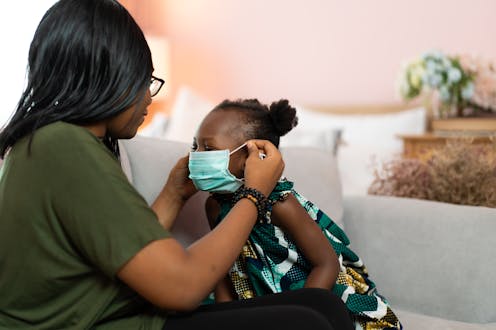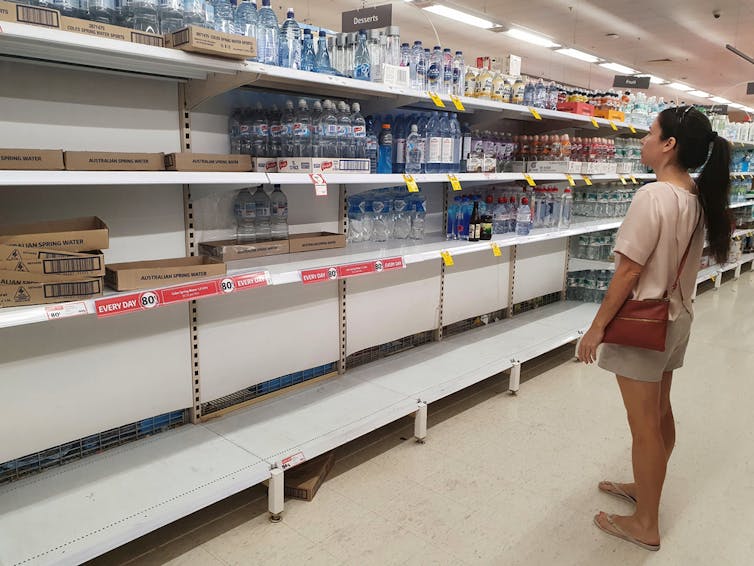Source: The Conversation (Au and NZ) – By C Raina MacIntyre, Professor of Global Biosecurity, NHMRC Principal Research Fellow, Head, Biosecurity Program, Kirby Institute, UNSW Sydney

COVID is an exceptional disease and was at its deadliest this year, causing more deaths in Australia between June and August 2022 than at any other time. There have been 288 deaths from influenza so far this year compared to more than 12,000 deaths from COVID.
The number of deaths from COVID in Australia in the first nine months of 2022 is more than ten times the annual national road toll of just over 1,000 – but we are not rushing to remove seat belts or drink-driving laws so people can have more freedom.
Isolation flattens the COVID curve by stopping infectious people from infecting others, and is a key pillar of COVID control.
Read more:
Imagining COVID is ‘like the flu’ is cutting thousands of lives short. It’s time to wake up
Removing isolation will not help the workforce
Workforce shortages have been felt in every sector during the pandemic. Shortages of health workers have resulted in the need to import workers from overseas, and deadly outcomes for patients in some cases.
During epidemic peaks this year, the workforce was so badly affected that supermarket shelves could not be stocked. Removing the isolation period is hoped to ease workforce shortages – but any relief will be short-lived.

Mari Nelson/Shutterstock
At times when COVID numbers are increasing, allowing infectious people to mingle freely at work and socially will create epidemic growth and make the crisis even worse. At the current time, when cases are relatively low, removing isolation mandates will not materially benefit the workforce, but will make the workplace and schools less safe.
Eliminating isolation rules provides the opportunity for governments to save costs. Without mandatory isolation support, payments for workers needing to isolate will end.
While politicians spin this as trusting Australians to take “personal responsibility”, sadly many Australians will simply not have the means to take time off work. With elimination of mandatory isolation periods, essential workers in low paying jobs will find themselves at even more risk of contracting COVID in the workplace.
Read more:
View from The Hill: national cabinet drops mandatory isolation, dumping ‘COVID exceptionalism’
The pandemic is not over
Newer variants of SARS-CoV-2, the virus that causes COVID-19, are more immune-evasive than ever. Immunity from vaccines wanes within two to three months, and so too does immunity from infection. Hybrid immunity is cited as a reason for abandoning isolation, but is unlikely to eventuate.
Indeed, we saw this with the recent BA5 wave leading to more hospitalisations and deaths than the January/February BA1 wave, despite the presence of much higher vaccine and infection-based immunity in the community. While no doubt this immunity prevented an even worse outcome, it clearly did not keep pace with virus evolution.
While it was hoped hybrid immunity from vaccines and prior infection would reduce subsequent infections, this has not been the reality. Reinfection is becoming more common with variants that are increasingly distant from the original virus. And evidence is accruing that reinfection can cause severe disease.
The most vulnerable may be forced to withdraw from society and from unsafe workplaces to protect themselves. But it is a misconception that COVID is trivial for everyone else. People who are happy and healthy today could become disabled or chronically ill from COVID.
The long-term complications of COVID-19 are substantial, and can include effects on the lungs, heart, brain and immune system. At 12 months after infection, the risk of heart attacks, strokes, blood clots and other complications including sudden death are about double compared to people who were never infected. Chronic complications can occur even after mild infection – including heart failure, strokes and dementia.
Dropping isolation will increase COVID transmission and result in an increase in serious chronic illness. It could be a mass disabling event and so drive major economic and societal losses.
The availability of treatments has been cited as a reason to cease isolation – but these are restricted to limited subgroups, and not available to everyone.
COVID is an epidemic disease and has behaved in a predictable way since 2020, causing recurrent epidemic waves.
Ceasing isolation will hasten the onset of the next wave. Allowing mass infection also creates favourable conditions for emergence of new variants which have been more contagious or more vaccine or treatment resistant.
What we need to do instead
To maximise productivity, health and social success, instead of ignoring COVID, we should tackle it with a layered approach to mitigation of transmission. This includes raising rates of boosters, widening access to antivirals and other treatments, masks, safe indoor air, and widely accessible testing.
Making isolation a rule, and supporting people financially to do so, has been a key pillar of our defences. This is still needed as viral evolution continues to outpace immunity.
We just had our worst wave and there is nothing to suggest the next won’t be similarly bad. Workplace absenteeism is a function of transmission, so better control of SARS-CoV-2 will result in greater productivity, less disruption to families and businesses, and a more successful way forward to living with COVID.
Read more:
Someone in my house has COVID. How likely am I to catch it?
![]()
C Raina MacIntyre receives funding from NHMRC and MRFF. She is currently receiving funding from Sanofi for research on influenza and pertussis. She is on the WHO COVID-19 Vaccine Composition Technical Advisory Group and the WHO SAGE Monkeypox and Smallpox ad hoc working group.
Brendan Crabb and the Institute he leads receives research grant funding from the National Health & Medical Research Council of Australia and other Australian federal and Victorian State Government bodies. He is the Chair of The Australian Global Health Alliance and the Pacific Friends of Global Health, both in an honourary capacity. And he serves on the Board of the Telethon Kids Institute.
The School Nancy Baxter leads receives research grant funding from the National Health & Medical Research Council of Australia, Australian Research Council, and other Australian federal and Victorian State Government bodies. She serves on the Advisory Board of The Australian Global Health Alliance and on the Board of the Nossal Institute. She has been an unpaid participant in an Advisor Board meeting for MSD Australia.
– ref. If you think scrapping COVID isolation periods will get us back to work and past the pandemic, think again – https://theconversation.com/if-you-think-scrapping-covid-isolation-periods-will-get-us-back-to-work-and-past-the-pandemic-think-again-191670







